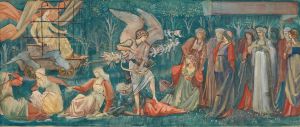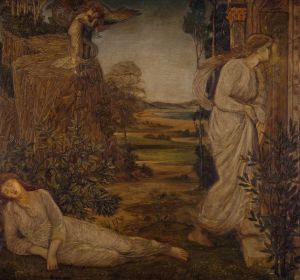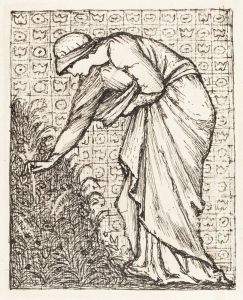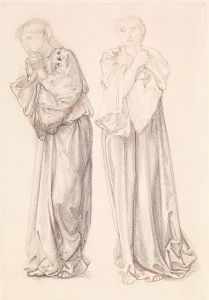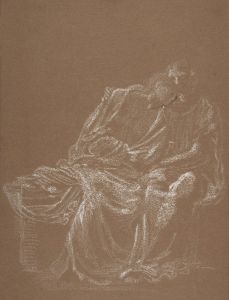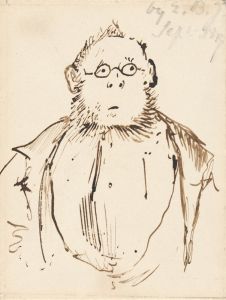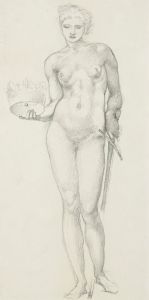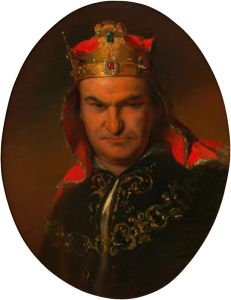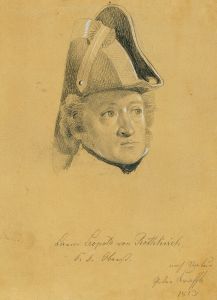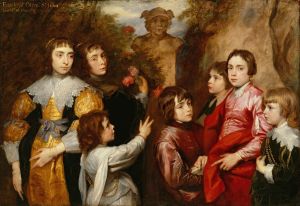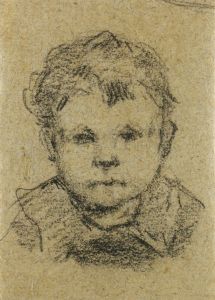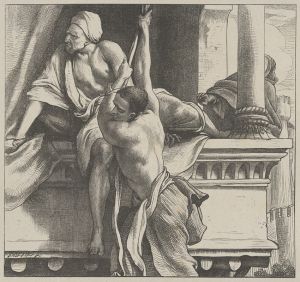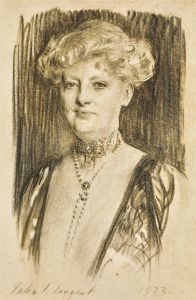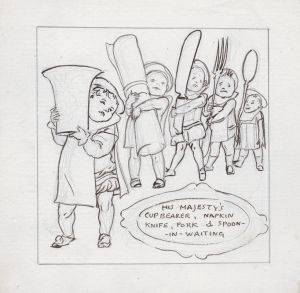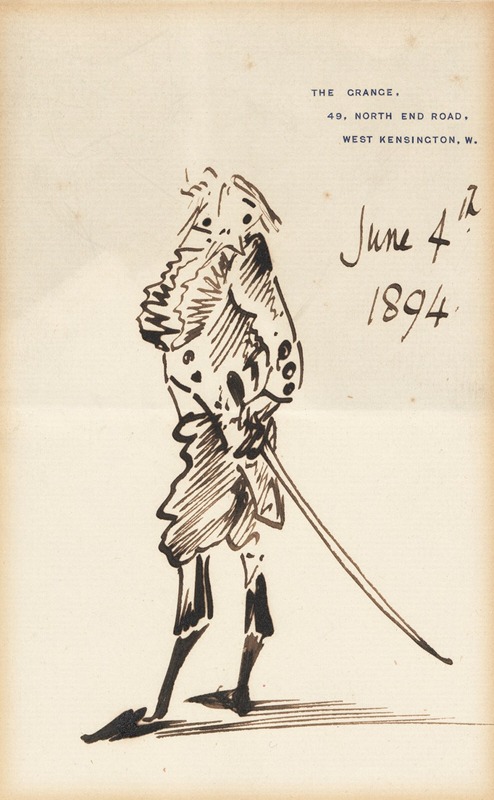
Self caricature in formal dress on the occasion of his baronetcy
A hand-painted replica of Sir Edward Coley Burne-Jones’s masterpiece Self caricature in formal dress on the occasion of his baronetcy, meticulously crafted by professional artists to capture the true essence of the original. Each piece is created with museum-quality canvas and rare mineral pigments, carefully painted by experienced artists with delicate brushstrokes and rich, layered colors to perfectly recreate the texture of the original artwork. Unlike machine-printed reproductions, this hand-painted version brings the painting to life, infused with the artist’s emotions and skill in every stroke. Whether for personal collection or home decoration, it instantly elevates the artistic atmosphere of any space.
Sir Edward Coley Burne-Jones, a prominent British artist associated with the Pre-Raphaelite movement, created a self-caricature in formal dress to commemorate the occasion of his baronetcy in 1894. This artwork is a humorous and lighthearted depiction of the artist himself, showcasing his wit and self-awareness. Burne-Jones was known for his deeply romantic and often mystical works, but this caricature reveals a different side of his personality, offering insight into his sense of humor and humility.
The drawing portrays Burne-Jones in formal attire, likely referencing the ceremonial nature of his baronetcy, an honor bestowed upon him by Queen Victoria in recognition of his contributions to the arts. The self-caricature is executed in a simple, sketch-like style, emphasizing its informal and playful nature. Unlike his more elaborate and detailed paintings, this piece is minimalistic, focusing on the essence of the moment rather than intricate details.
Burne-Jones's baronetcy marked a significant milestone in his career, as it was a rare honor for an artist during that period. While he was celebrated for his large-scale works, such as "The Golden Stairs" and "The Beguiling of Merlin," this self-caricature serves as a personal and intimate reflection of the man behind the art. It demonstrates his ability to step back from the grandeur of his professional achievements and approach his own image with humor and modesty.
The artwork is often cited as an example of Burne-Jones's multifaceted personality, which combined a deep dedication to his craft with a playful and self-deprecating sense of humor. It also reflects the broader Victorian tradition of caricature and satire, which was a popular form of artistic and literary expression during the 19th century.
This self-caricature is not as widely known as Burne-Jones's major works, but it holds significance as a personal artifact that sheds light on his character and the context of his life at the time. It is a reminder that even artists celebrated for their serious and profound contributions to culture can also engage in lighthearted self-expression. The piece is preserved as part of Burne-Jones's legacy, offering a glimpse into the private and humorous side of one of the most influential artists of the Victorian era.





